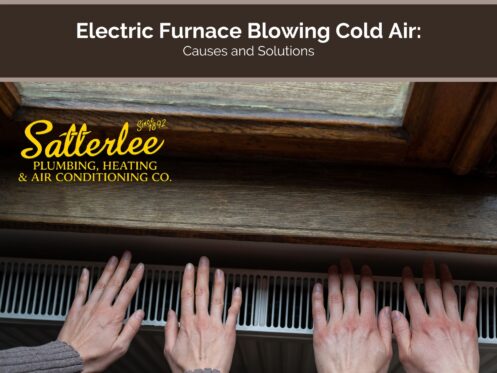When your electric furnace starts blowing cold air instead of warm, it can be a frustrating and uncomfortable experience, especially during chilly winter months. Understanding the potential causes and solutions can help you troubleshoot the issue and restore warmth to your home.
Common Causes of an Electric Furnace Blowing Cold Air
Thermostat Issues
One of the most frequent culprits behind an electric furnace blowing cold air is a thermostat problem. Ensure your thermostat is set to “heat” mode and not “cool” or “off”. Additionally, check that the fan setting is on “auto” rather than “on.” When set to “on,” the fan will continuously circulate air, even when the heating cycle isn’t active, potentially leading to cold air blowing through your vents.
Dirty Air Filters
A clogged air filter can significantly impact your furnace’s performance. Over time, filters become saturated with dust and debris, restricting airflow and causing the system to work harder. This can lead to overheating and automatic shutdown, blowing cold air through your vents. Regularly changing your air filters (typically every 30-90 days) can prevent this issue and improve overall efficiency.
Electrical Issues
Electric furnaces rely on a consistent power supply to function correctly. A tripped circuit breaker, a blown fuse, or a bad thermostat can cause your furnace to stop heating. Check your home’s electrical panel and reset any tripped breakers or replace blown fuses. If this issue occurs frequently, it may indicate a more serious electrical problem that requires professional attention.
Faulty Heating Elements
Electric furnaces use heating elements (similar to those in a toaster or hair dryer) to generate warmth. If these elements malfunction or burn out, the blower may continue to run without producing heat. This can result in cold air being circulated throughout your home.
Troubleshooting Steps for Electric Furnace Blowing Cold Air
- Check Thermostat Settings: Ensure your thermostat is set to “heat” mode and the temperature is set higher than the current room temperature.
- Inspect and Replace Air Filters: Locate your furnace’s air filter and examine it for dirt and debris. Clean or replace as necessary.
- Verify Power Supply: Check your circuit breaker panel for any tripped switches related to your furnace.
- Examine Vents and Registers: Make sure all vents and registers in your home are open and unobstructed to allow proper airflow.
- Reset the System: Turn off your furnace at the thermostat and the main power switch, wait for a few minutes, then turn it back on.
When to Call a Professional for Electric Furnace Blowing Cold Air
While some issues can be resolved through simple troubleshooting, others require the expertise of a trained HVAC technician. When your furnace is showing signs of needing repair, consider calling a professional if:
- You’ve tried the above steps and your furnace is still blowing cold air
- You notice unusual noises or odors coming from your furnace
- Your furnace frequently cycles on and off
- You suspect issues with the heating elements or control board
At Satterlee, our professionals can perform a thorough inspection, diagnose complex problems, and ensure your furnace is operating safely and efficiently.
Preventive Maintenance
Regular maintenance is key to preventing many furnace issues. Schedule annual inspections to catch potential problems early and keep your system running smoothly. Additionally, changing air filters regularly, keeping vents clear, and addressing minor issues promptly can help extend the life of your electric furnace and maintain its efficiency.
By understanding the common causes of an electric furnace blowing cold air and following these troubleshooting steps, you can often resolve the issue quickly. Remember, when in doubt, it’s always best to consult with a professional to ensure the safety and proper functioning of your heating system. If you have any questions, reach out to Satterlee today!


